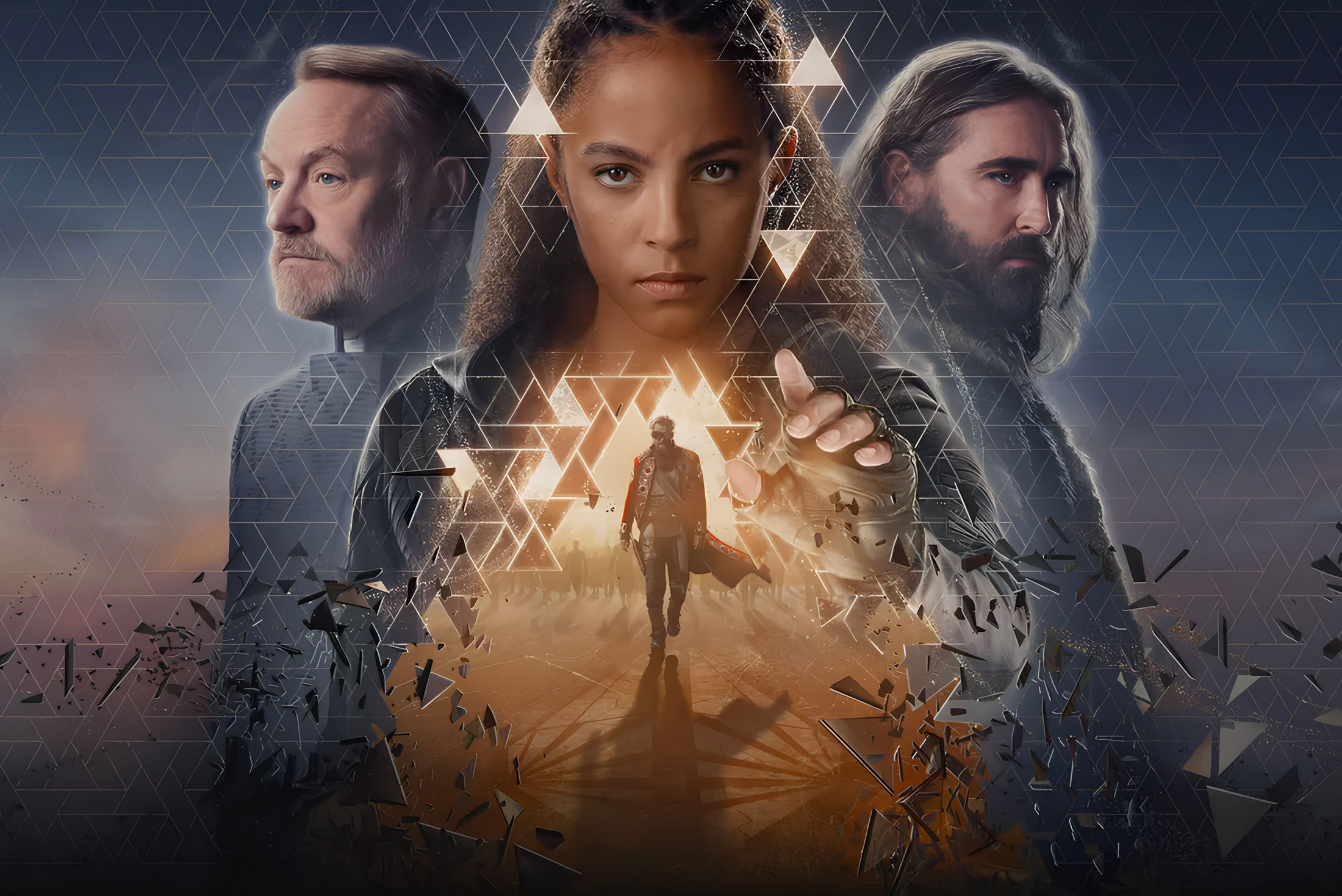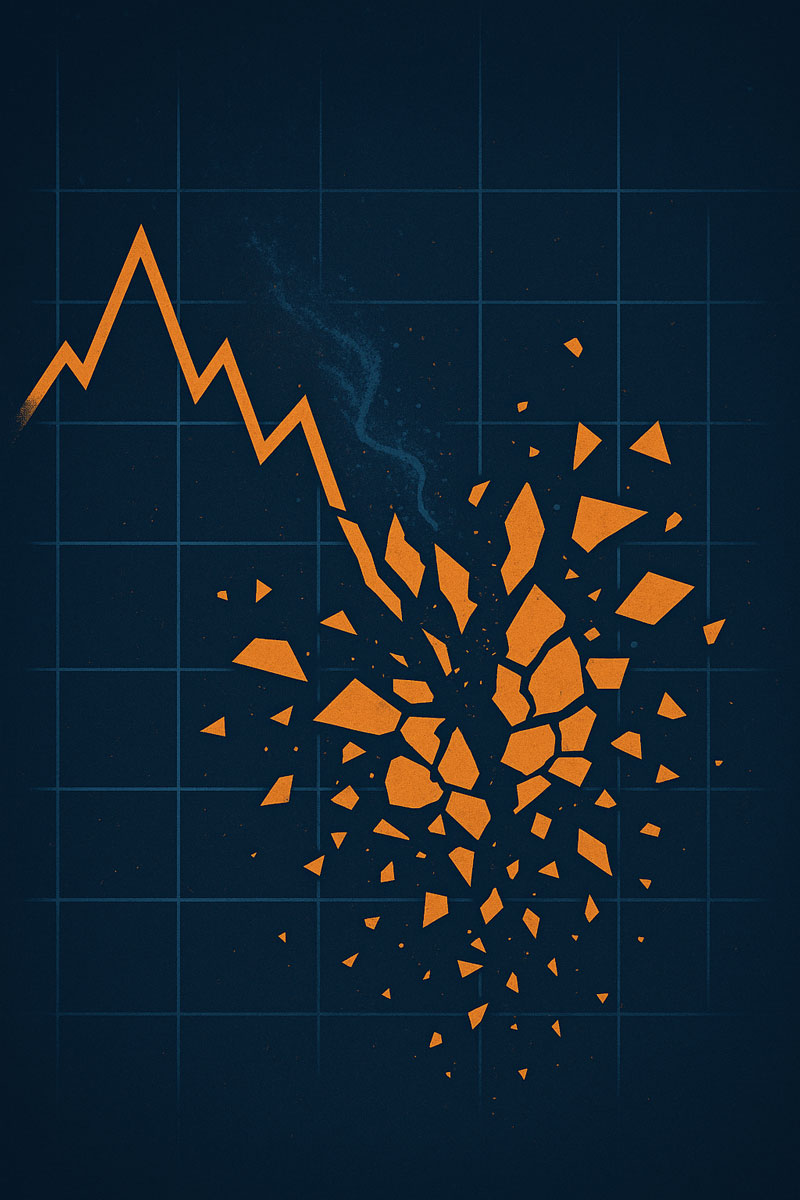1

AI, Robotics & Data
What if the future could be predicted like the weather?
From Asimov's psychohistory to today's scientific models
5 mins
What if our societies were predictable? In Foundation, the cult novel by Isaac Asimov adapted into a series by Apple TV+, a scientist imagines a science capable of predicting the collective future. Hari Seldon calls it psychohistory: a kind of weather forecast for civilizations.
Asimov himself explained that his psychohistory was inspired by the laws of gases in physics: each molecule is unpredictable, but billions of molecules obey statistical laws. Individuals escape calculations, the masses become predictable.
Brilliant fiction... but who questions: in our real world, where pandemics, wars and AI are constantly reshuffling the cards, could we really invent a compass for the future?
When fiction inspires science
At Asimov, the recipe works thanks to three conditions:

- Lots of people : individual behaviors compensate each other, the average becomes predictable.
- Stable rules : no sudden changes in institutions or technologies.
- Little mirror effect : ideally, people don't change their behavior because they know the prediction.
In the novels, only a small circle knows about the “Seldon Plan.” In the television series, on the contrary, everyone tries to follow or thwart this plan, it is a perfect example of reflexivity (The prediction changes the future she wanted to describe.)
And in our world? We are not talking about prophecies, but about mass statistics and collective cycles. Researchers know that the more you zoom in on a person's scale, or the farther you push the time horizon, the more uncertainty increases. But in the short and medium term, some trends are becoming legible. This is the field of strategic foresight.
What fiction saw (almost) well
Cliodynamics: a barometer of centuries
Cliodynamics, an emerging discipline, proposes to analyze history as a long-term barometer. The researcher Peter Turchin thus combined demographics, inequalities, public finances, political tensions... Result: cycles that herald periods of strong instability.
As early as 2010, Turchin wrote: “American society is entering a period of turbulence comparable to the American Civil War.” Ten years later, the polarization and the crisis of 2020 seemed to prove him right.
Think of it as a barometer: it doesn't say “riot on Tuesday at 5 pm”, but “heavy weather zone in the coming years.”
Seshat: a base that challenges preconceived ideas
The Seshat database compiles, in a homogeneous way, hundreds of past companies. It makes it possible to test hypotheses that have long been accepted:
“Great moralizing gods made it possible to create great empires.”
Looking at the data, we see the opposite: the great empires appear first, and the gods “who are watching” come up with what is useful for stabilizing what already exists.
“Military pressure is pushing companies to structure themselves.”
Confirmed: in some regions, competition/war has actually accelerated the emergence of more complex states.
In short, we keep the ideas that stick to the facts, we let go of those that don't stick.
Forecast tournaments and predictive markets
Prediction tournaments put volunteers in competition on numerical questions (“Will this law be adopted before 31/12?”). The best, known as superforecasters, often beat the experts.
During COVID, some anticipated the evolution of epidemic waves faster than health agencies. On the war in Ukraine, these tournaments made it possible to estimate the probability of an escalation.
A close cousin, predictive markets (e.g. Polymarket), where the price of a contract reflects a collective probability in real time. During American elections, they were sometimes more accurate than conventional polls.
These approaches show that a collective signal can emerge. But as soon as the forecast is known, it influences behavior. It's reflexivity, prediction sometimes changes the future that it only wanted to describe.
Interlude, what “time” are we talking about?

Before talking about foresight, we must focus on a seemingly simple question; what is time? Because depending on how you think of it, forecasting does not have the same scope.
Since Einstein, we've known that time is not a universal clock that ticks everywhere the same way: it depends on the speed and gravity of the observer. By analogy, we could say that societies also do not all evolve at the same pace: some advance very quickly, others seem frozen in another age.
And yet, we all experience a common direction: time flies forward. This is what physicists call the arrow of time, dictated by entropy. Broken glass cannot be recomposed. A revolution or a pandemic leaves a lasting, irreversible trace. History, like nature, carries the memory of what took place.
One last vertigo, is time a single line that we all share, or is time a tree that branches at each fork? In the first vision, it would be possible to identify a global trend that concerns us all. In the second, each choice opens a new branch, and the future is less like a road and more like a cone of possibilities.
In short, time is relative, irreversible, and open. And it is on the basis of this reality that social forecasting must be thought of.
Why (and where) does it break

If “modern psychohistory” already exists a bit, why don't we have a Seldon Plan yet? Because every time you push too far, the patterns break.
When the horizon extends, chaos ensues
In the short term, some models work well. But as soon as you stretch the horizon, the butterfly effect occurs and mistakes accumulate. Internet, social networks, the pandemic, today generative AI: in an instant, everything changes, and yesterday's models become obsolete.
When prediction changes reality
An announcement of a “probable crisis” can trigger panic... and cause a crisis. On the other hand, a reassuring announcement can calm the markets and cancel out the predicted crisis. It's reflexivity, again.
When the rule becomes the objective
The temptation to turn measures into goals is Goodhart's law. An average grade can be used as an indicator of grade level. But as soon as it is made a criterion for evaluating professors, there is a great temptation to artificially inflate the grades. The indicator no longer measures anything real.
Add the Lucas effect, (that's going to talk to investors ^^) a known rule becomes an exploited rule. If everyone knows that the central bank will cut rates in the event of a crisis, investors take more risks. The initial model is invalidated by the behaviors that it itself triggered.
But the most daunting limit remains data. It's the nerve... and the Achilles heel of foresight.
It is often incomplete (holes in the racket), biased (some groups more visible than others), indirect (we measure “proxies” like tweets, not real opinion) and sometimes deliberately oriented... political and ideological narratives blur the waters.
Behind a war “for democracy” or a “humanitarian” intervention, there may be a carefully hidden pipeline, sphere of influence, or economic interest. Result: the databases we use are already distorted beforehand by the official version of events.
In short, “Garbage in, garbage out”: if the data is bad or oriented, so is the prediction. And in the social and political field, it is rare for them to be truly neutral. History is written by the winners... and so are their data models...
Conclusion: no prophecy, but a compass
Asimov offered us a splendid myth: a scientist who reads the future of peoples as one reads the stars. In real life, we don't have a “Seldon Plan” and that's good. What we have is a new alliance: AI as an instrument, strategic foresight as a method.
AI alone is not a prophetess. It is a projector, a patient calculator, capable of sorting massive data and mapping conditional futures. But without a method, his projections quickly turn to a sterile curve or to the illusion of an oracle.
As the prospectivist Hugues de Jouvenel summarizes, “Predicting is not guessing, it is clarifying choices.”
Together, these two dimensions complement each other:
- AI illuminates the paths (data, signals, probabilities),
- the method guides the gaze and the decision (scenarios, governance, action).
Our future is not written, it is sculpted by our choices. The challenge is not to predict a single future, but to prepare several futures and to choose the one we want to make more likely.
AI is not ready to replace your intuition. But well used, it gives him shoulders (data), a compass (scenarios) and a flight log for us to pilot.




